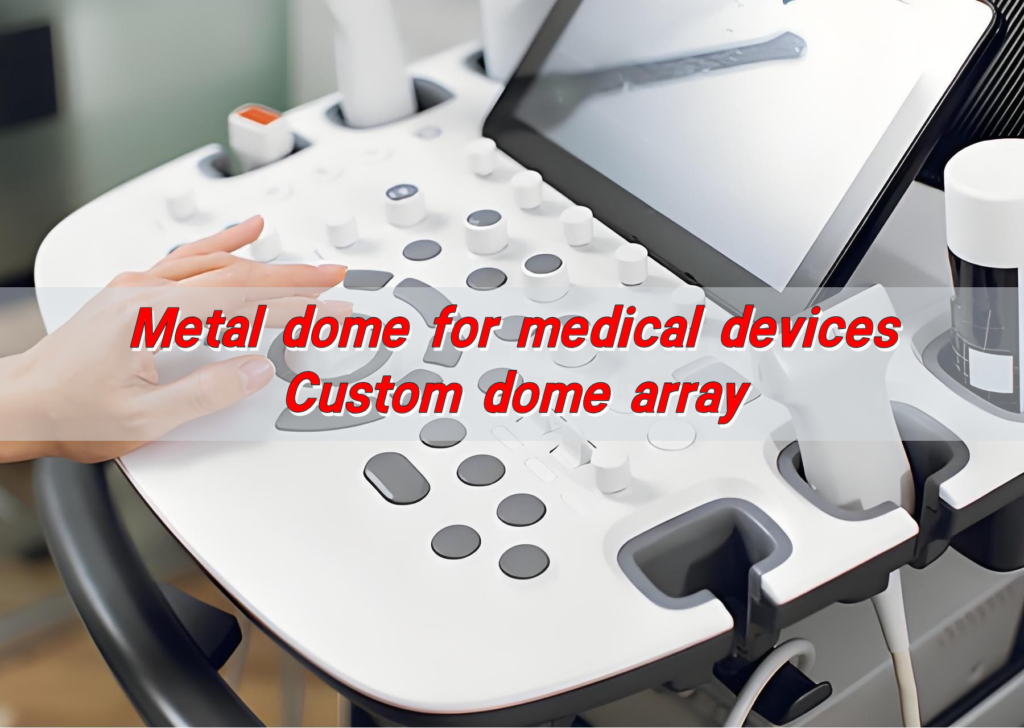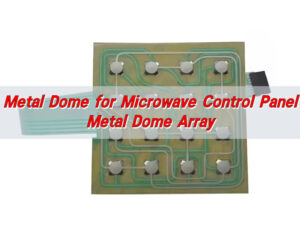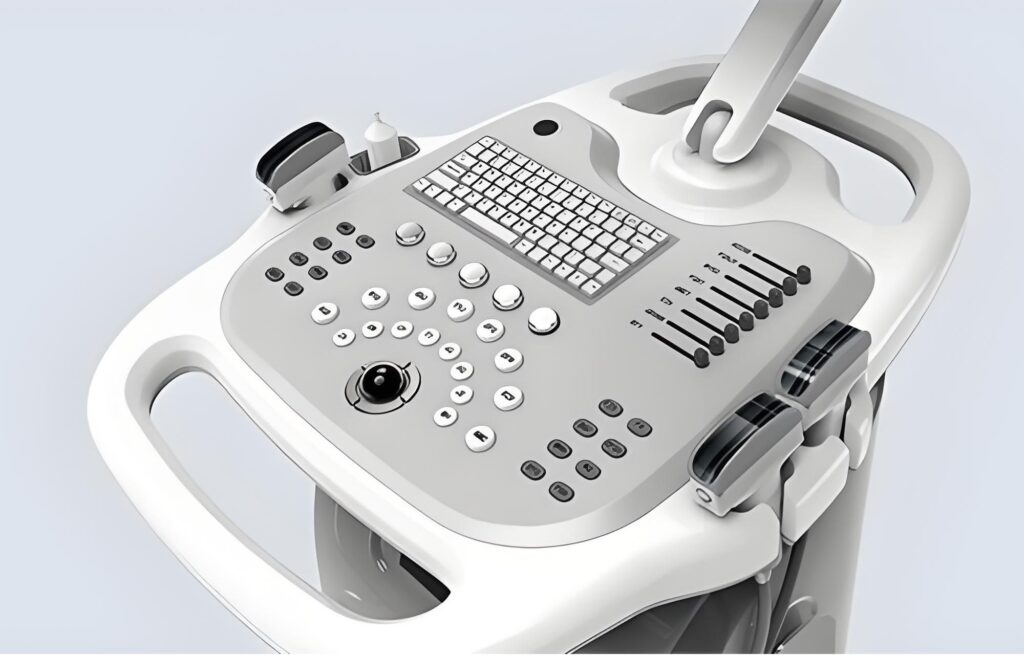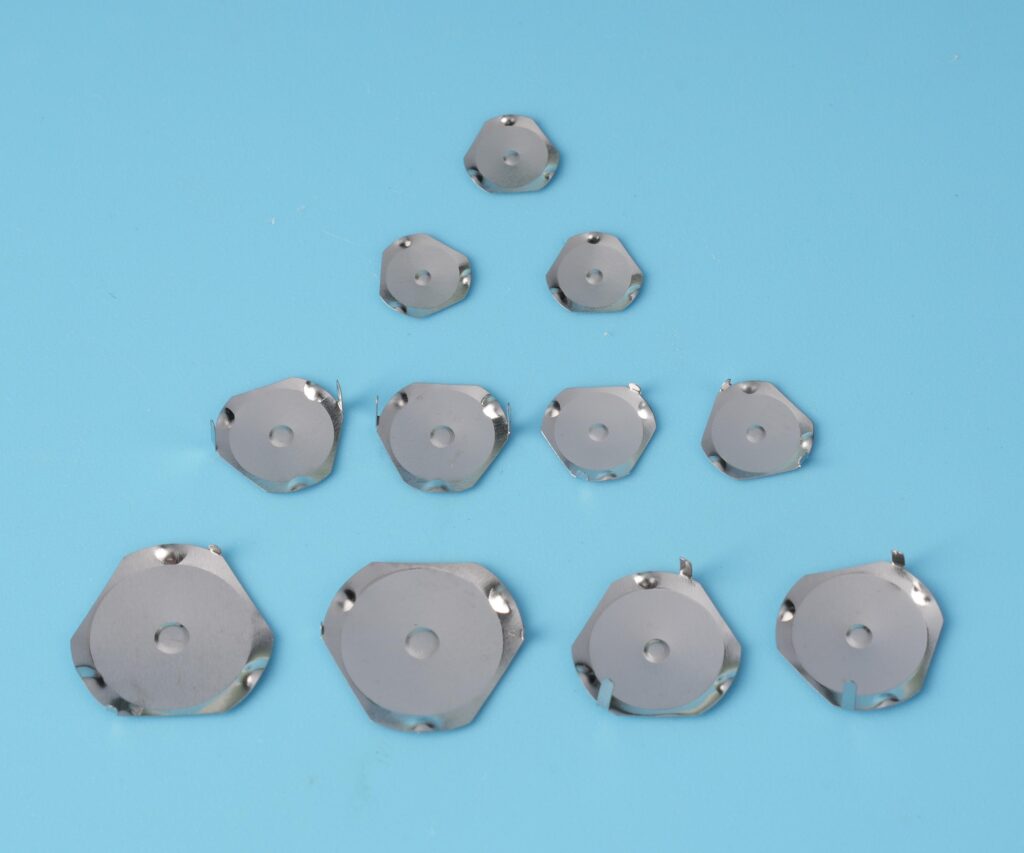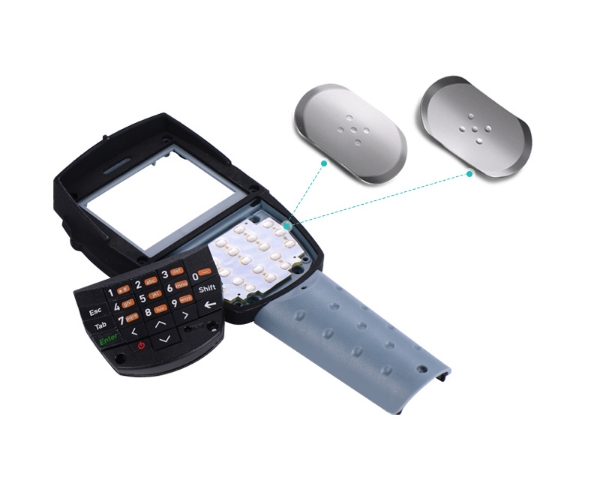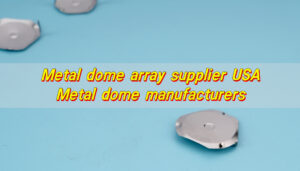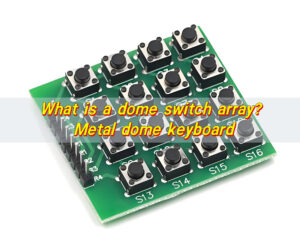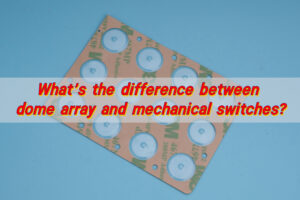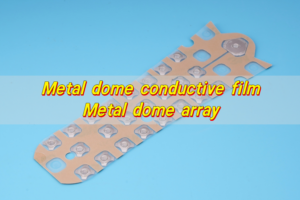Metal dome for medical devices offer precise tactile feedback, making them essential in life-critical healthcare tools. From monitors to infusion pumps, each press must respond instantly and accurately.
Custom dome array ensures exact fit and feel, tailored to each device’s layout and function. It boosts reliability, simplifies assembly, and enhances user confidence.
What is a metal dome in medical devices?
Metal dome in medical devices is a snap-action element placed beneath a keypad or interface layer. It gives a distinct tactile feedback when pressed, which helps confirm the input has been registered. In medical settings, this feedback is crucial for reliability.
These domes are typically made from stainless steel or other conductive metals. They are used in user interfaces that must be compact, responsive, and extremely reliable. Metal domes ensure that medical equipment operates smoothly with minimal effort and high accuracy.
Because of their durability, metal domes are suitable for high-usage environments like hospitals, clinics, and labs. They support precise communication between the device and its user.
Why are dome arrays used in medical equipment?
Dome arrays are used in medical equipment to provide organized, stable, and efficient switch solutions. A dome array consists of multiple metal domes fixed on an adhesive or PET layer in a precise pattern.
In medical devices, dome arrays help streamline manufacturing by reducing assembly time. They are designed to match the layout of the device, ensuring perfect alignment. This improves responsiveness and eliminates the possibility of misaligned switches, which can lead to input errors.
Dome arrays also help reduce cost by simplifying integration and minimizing failures. Since they are pre-assembled, technicians save time during the manufacturing process. This is particularly useful in medical electronics, where speed, efficiency, and precision are essential.
Which medical devices use metal domes?
Many types of medical devices use metal domes. Their versatility and reliability make them ideal for a wide range of applications.
- Infusion pumps: Metal domes offer quick tactile feedback for precise dosage adjustments.
- Portable ventilators: Dome arrays support essential functions in life-saving respiratory machines.
- Blood analyzers: Operators benefit from clear and accurate button presses.
- Patient monitors: Domes ensure critical setting changes are confirmed by touch.
- Defibrillators: Every command must register immediately, and domes provide that assurance.
- Handheld diagnostic tools: They allow users to operate the device confidently with a single press.
- Wearable medical electronics: Flexible dome arrays make compact, comfortable designs possible.
These examples show the wide scope of dome usage in healthcare. Metal domes support high-performance functions without occupying much space, which is key in modern medical technology.
Can metal domes be customized for medical devices?
Yes, metal domes can be fully customized to match the needs of each medical device. Customization plays a big role in ensuring the device feels and functions exactly as required.
Custom dome arrays can be designed in various shapes, including round, triangle, and four-leg domes. Force levels can be selected to suit user preferences, from light-touch domes around 100g to firm ones above 600g. You can also define the dome size to adjust tactile feel, actuation distance, and durability.
Dome layouts are created to fit the keypad or switch panel precisely. Whether the design is flat or curved, rigid or flexible, manufacturers can adapt the dome array to fit the application. Arrays can include adhesives, circuit layers, or printed marks for orientation.
Customization ensures optimal user experience, better interface reliability, and faster product development.
What metals are used in medical device domes?
The most common metal used in medical device domes is stainless steel, especially SUS301 or SUS304. These materials are corrosion-resistant, durable, and stable under long-term use. Stainless steel domes can withstand moisture, cleaning agents, and repeated sterilization, making them ideal for medical environments.
In some applications, domes are coated with nickel or gold. Nickel plating improves electrical conductivity and wear resistance. Gold plating provides even higher conductivity and prevents oxidation, which is crucial in sensitive diagnostic or monitoring devices.
These metals are carefully selected to meet medical-grade standards. They comply with regulations like ROHS and REACH. The right metal ensures the dome performs consistently without degradation, even after thousands or millions of actuations.
What makes metal domes ideal for medical supplies?
Metal domes are ideal for medical supplies because they combine durability, precision, and safety in a compact form. Their tactile response gives users instant feedback, reducing the risk of missed or repeated inputs. This leads to smoother and more reliable device operation.
They also offer high life cycles, often exceeding one million presses. This long lifespan ensures that medical devices continue to work without interruption. Metal domes maintain performance under heavy use, temperature shifts, and moisture exposure.
In addition, metal domes have a low profile. They can be used in ultra-slim designs, such as portable monitors or wearable health trackers. Their sealed structure also prevents dust or contaminants from interfering with function.
Metal surfaces are easy to clean and disinfect. This makes them suitable for devices used in operating rooms, ICUs, and other sterile zones.
Overall, metal domes help medical supplies perform better while staying reliable, efficient, and user-friendly.
How do dome arrays improve device performance?
Dome arrays improve device performance by enhancing input accuracy, tactile feel, and structural reliability. Dome arrays deliver that consistency across every press.
The structured layout of dome arrays ensures uniform key placement and response. Every press feels the same. This repeatability reduces user fatigue and minimizes chances of input error.
Arrays also help protect the underlying circuit. Since domes are mounted on a layer, they create a buffer that absorbs pressure. This lowers the risk of damaging sensitive components beneath.
When used in high-stakes environments, like emergency care or surgical monitoring, every second counts. Dome arrays make controls intuitive and dependable, improving both safety and speed.
They also help extend device life. Arrays reduce stress on individual components, leading to fewer replacements or breakdowns.
What to consider when choosing domes for medical devices?
When selecting domes for medical applications, several key factors must be considered:
- Tactile Force: Choose a force that matches the device’s purpose. Light presses for wearables, firmer domes for critical inputs.
- Dome Shape and Size: Shape affects response. Round domes are common, but triangle or four-leg shapes may offer better stability in some designs. Size changes how the dome feels and performs.
- Environmental Resistance: Devices may face cleaning agents, humidity, or temperature changes. The domes must hold up under these conditions.
- Certifications and Safety: Materials should comply with medical regulations such as ROHS, REACH, or even FDA guidelines, depending on where and how they’re used.
- Durability: The dome should last through frequent use without failing. Choose high-quality domes tested for millions of actuations.
- Integration: Ensure the dome array fits into your device design. This includes dimensions, adhesive layers, and stack-up compatibility.
- Customization Options: Customization allows better performance, especially in unique medical interfaces.
The right dome choice directly affects how well a device performs and how users feel using it. That’s why careful selection is essential during the design phase.
Conclusion:
Metal domes for medical devices bring precision, trust, and performance to every press. Their material strength, design flexibility, and tactile feedback create better user experiences and improved care delivery.
Custom dome arrays make integration faster and smarter. They simplify assembly, reduce error, and enhance device performance from the inside out.
If you’re ready to improve your medical device with high-performance dome arrays, we’re here to help. Contact us at sales@metal-domes.com for support, samples, and expert advice tailored to your application.


